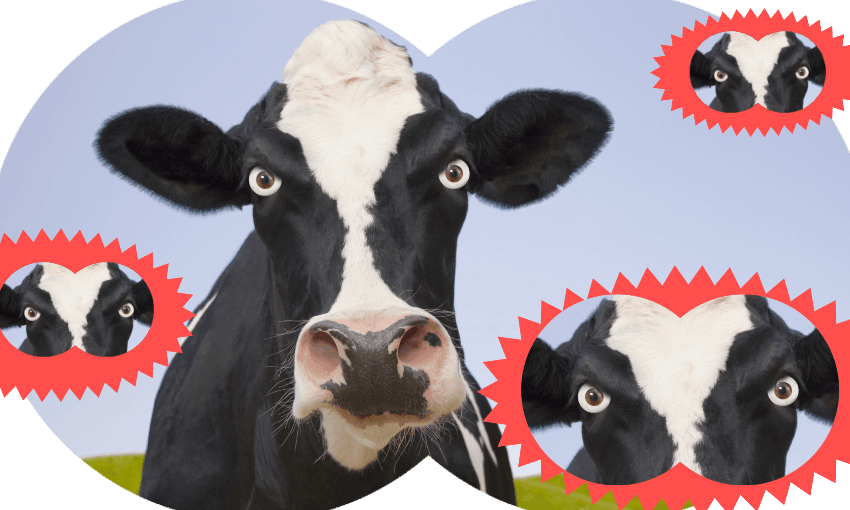If you thought local farmers might be worried about the growing plant-based meat trend, think again.
Yes, Impossible meat looks like the real thing, and tastes just like it too. But it’s not “like for like,” warns Sam McIvor. “The health and nutritional attributes between meat and alternatives are … not nutritionally equivalent.”
When it comes to the rise of plant-based products, McIvor, the chief executive of Beef + Lamb New Zealand, is a rare dissenter. Of course, that’s his job. Advocating for the country’s farmers and promoting their products, most of which head overseas, is what he does every day.
When Impossible, the hottest name in plant-based food, arrived in Aotearoa last month, it felt like it could be a turning point, a moment that might have farmers shaking in their gumboots wondering if beef’s glory days are over. The reviews from fans were glowing: “It’s completely mind-blowing,” one restaurant owner already using the product said. “It’s like they’re playing a trick on your brain.”
“I think it’s an opportunity to think about where agriculture and farming are going to go,” Nick Halla, Impossible’s senior vice president of international, said when the product launched in local supermarkets.
As populations rise, so too does the demand for protein. By 2050, protein production needs to double. That will be impossible to do it with meat alone, Halla said. “We can’t feed the world this way, even if we wanted to.”
That’s true of other countries, says McIvor, but not New Zealand. He points to overseas feedlot systems, where cows live in dirt patches and are pumped full of grain instead of grass, as their waste spills into giant pools, as the biggest contributor to the rise of veganism and alternative products.
“[Impossible] is a backlash to industrial agriculture in the US, and feedlot systems that dominate production internationally,” he says.
In Aotearoa, he says, it’s the opposite. “We have a unique climate in New Zealand that allows us to farm those animals naturally, outside, all year round … the way nature intended,” he says. “We’re working hard to look after our environment. We’re matching our production systems with biodiversity and emissions reductions on our farms.”
Instead of seeing it as a threat, McIvor says farmers see the plant-based trend as an opportunity to tell their “conception to consumption” story to customers. “As much as we saw that yes, that could be a threat, we saw it as an opportunity to differentiate ourselves on the global stage,” he says.
“Red meat, such as New Zealand beef and lamb, are considered whole, natural foods providing an array of essential nutrients and therefore included in nutrition guidelines around the world. That, we saw as a really fantastic story to put in front of our consumers.”
Ask McIvor about Impossible, and that’s where the beef really occurs.
Halla told The Spinoff the $4 billion company’s food technicians were constantly tweaking Impossible’s products to make them healthier and bring them closer to the real thing. Version 2.0 of their beef was released in 2019, and they also do sausages, mince, pork and nuggets.
In a taste test of their burger patties, The Spinoff was impressed by just how closely the product compared to one made from ground beef.
McIvor has a different take.
“Alternative products have multi-ingredients and have undergone a high level of processing, and, depending on the product, results in higher levels of sodium and saturated fat than meat, which are elements encouraged to reduce in healthy diets,” he says.
But what about the environment? Meat agriculture is notoriously bad for the climate, creating a reported 60kg of carbon per kilo of beef. Halla said Impossible’s products use 96% less land, 87% less water and emit 89% fewer greenhouse gas emissions compared to beef.
Those figures would be far lower in New Zealand, says McIvor. “Historic research shows our carbon footprint is around half the average figure globally but new research out shortly will show we are a world leader in this area,” he says.
“A quarter of New Zealand’s total native vegetation is nurtured on sheep and beef farmland and the majority of the water our farmers use comes from the sky.”
One thing McIvor and Halla agree on is that we can’t keep feeding the world on meat. “The world population is expected to grow to 10 billion by 2050,” McIvor says. “New Zealand’s red meat sector can only feed about 24 million people.”
“There’s room for both alternative proteins and red meat,” he concedes.
Would McIvor eat Impossible? He already has. About five years ago, he headed to California to see what all the fuss was about.
He didn’t dig it. “Being a meat connoisseur and as someone with a reasonably defined palate when it comes to meat, it didn’t have the mouthfeel or taste or eating experience when it comes to eating a natural product,” he says.
“You’d expect me to say that,” he admits, “[but] that was my experience with it.”



